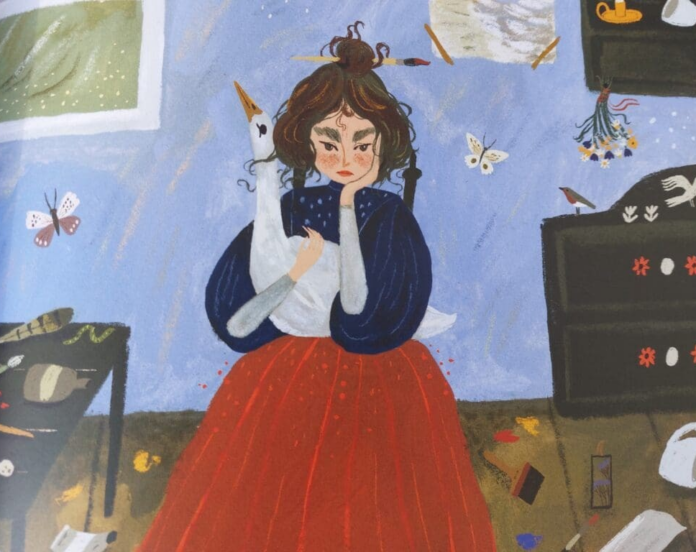Hier geht es zur deutschen Übersetzung des Interviews!
Recently a new publication about Paula Modersohn-Becker came out: a children’s book about young Paula on the North Frisian Island Amrum. It has been published in three different versions: one in West Frisian, another one in Dutch and a bilingual version in German and North Frisian (Öömrang, as spoken on Amrum). The book project is a collaboration between the West Frisian publisher De Ryp in the Netherlands and the North Frisian Ferring Stiftung in Germany.
The story is inspired by the life of Paula Modersohn-Becker (1876–1907). In 1903 she spent several weeks on Amrum, drawing the Frisian houses and villages of the island.
In the fictional story Paula and the lost mirror, Paula is twelve years old, visiting her grandmother on Amrum. She uses a magical golden mirror to draw a self-portrait that she wants to gift her grandmother – but then she loses the mirror. A search around the whole island begins.
kulturkanal.sh talked to the Belgian illustrator Tijana Lukovic about the making of the book, her connection to nature, and the artistic freedom of fictional stories. The painter and illustrator Tijana Lukovic lives in Ghent with her husband and their daughter. Her work is inspired by nature, folklore and mythology.
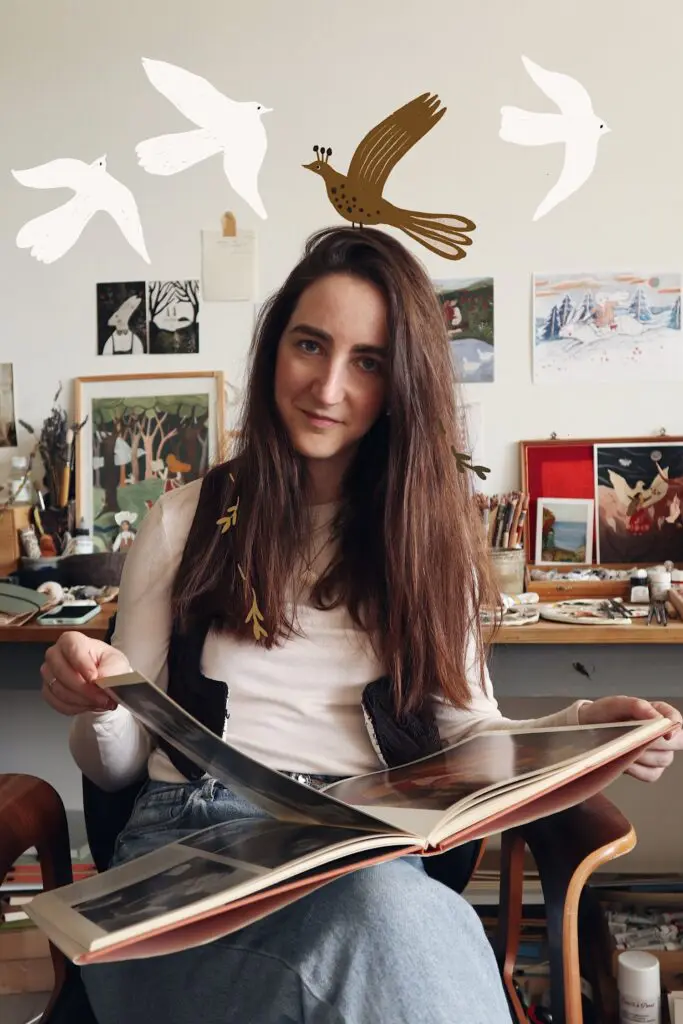
Tijana Lukovic in her studio in Ghent, Belgium
Copyright: Tijana Lukovic
kulturkanal.sh: What came first: the story or the illustrations?
Tijana Lukovic: First came the story – no, first came the idea. My long-term friend Marije Sennema sent me a postcard with a self-portrait from Paula Modersohn-Becker (Selbstbildnis mit Kamelienzweig). She said that Paula was her new favourite artist. As I was starting to work again as an illustrator after being a full-time mum for some time, I put the postcard on the wall in front of me as an inspiration. I was drawn to it. I felt really connected to the way Paula holds the leaves close to her chest. So, I started to research her a bit more and then fell in love with her work. I told Marije and we thought: Maybe we could do a book together.
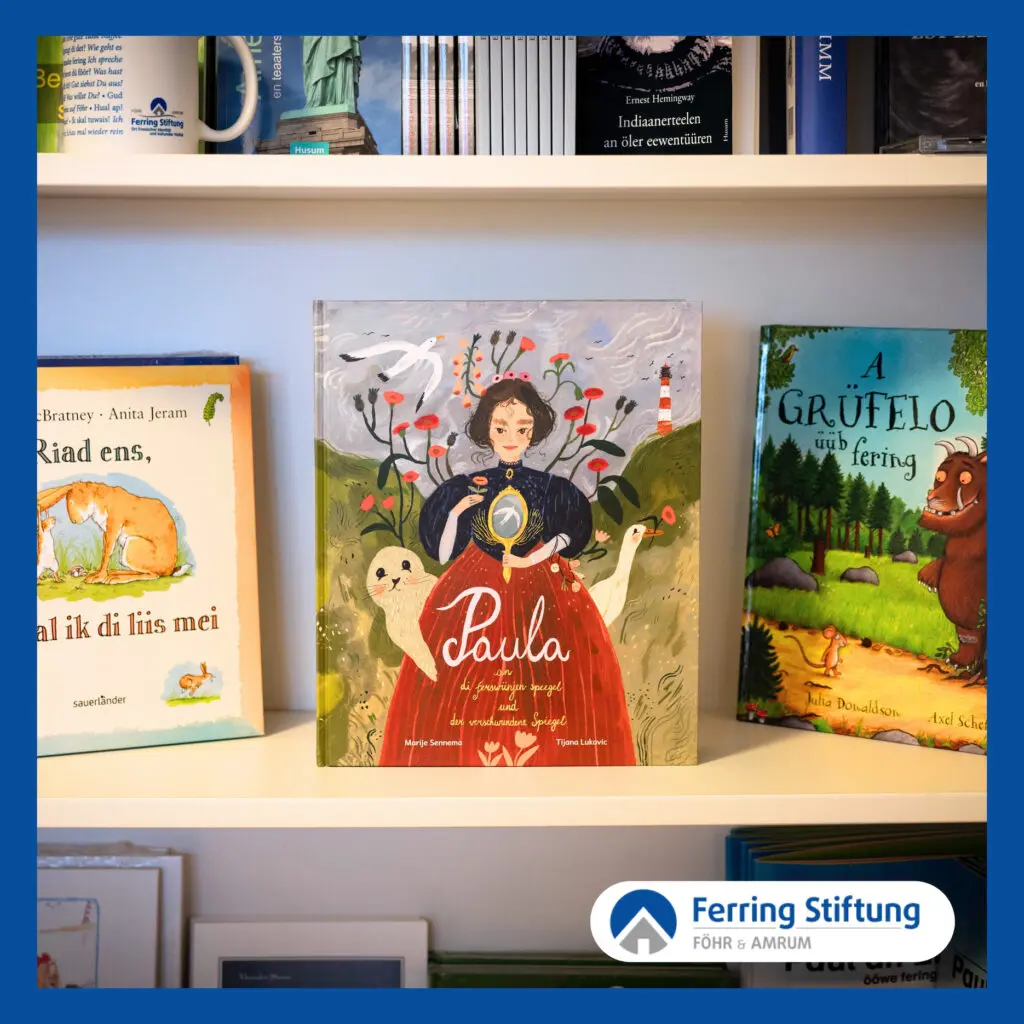
Marije Sennema: Paula und der verschwundene Spiegel / Paula an di ferswünjen speegel
with illustrations from Tijana Lukovic
De Ryp / Ferring Stiftung
20 Euros
What happened then?
Marije wrote the story and changed it several times before I started with the illustrations. She sent the manuscript to me when it was almost done – with instructions for the paintings. I followed the instructions but I also included elements that were really special to me. For example, I had researched that Paula Modersohn-Becker had her own studio in Worpswede with blue walls. I really liked that it was blue. I wanted to connect the younger Paula who visits her grandmother on Amrum with the older Paula in Worpswede, so I painted her studio on Amrum in that shade of blue.
This is not a real story about Paula. We actually know that she didn’t start painting before she was 16 years old. It is more about what she could have been like. So, we had that kind of artistic freedom.
Your illustrations are full of small elements like animals and plants. Do you know which elements you will include when you start drawing – or do you decide on that spontaneously?
Some elements are what Marije wanted me to include, like elements from Amrum. I have never been to the island, but she went there and sent me her pictures as references. I included a map of Amrum and also painted the landscape: the dunes, the lighthouse and the Frisian houses.
Other things I included spontaneously. Sometimes I even draw elements from my studio, that are right in front of me: little shells, stones, and feathers. I thought, Paula, who enjoys nature so much, might also have had these kinds of things close to her.
There are also some elements I always use in my work, that are a signature of what I do outside of this book: I often bring nature inside the house, a robin, a hedgehog… It was Marijes idea that a goose follows Paula around. That also fits my other work. I always draw animals following my female figures – like a shadow or an alter ego.
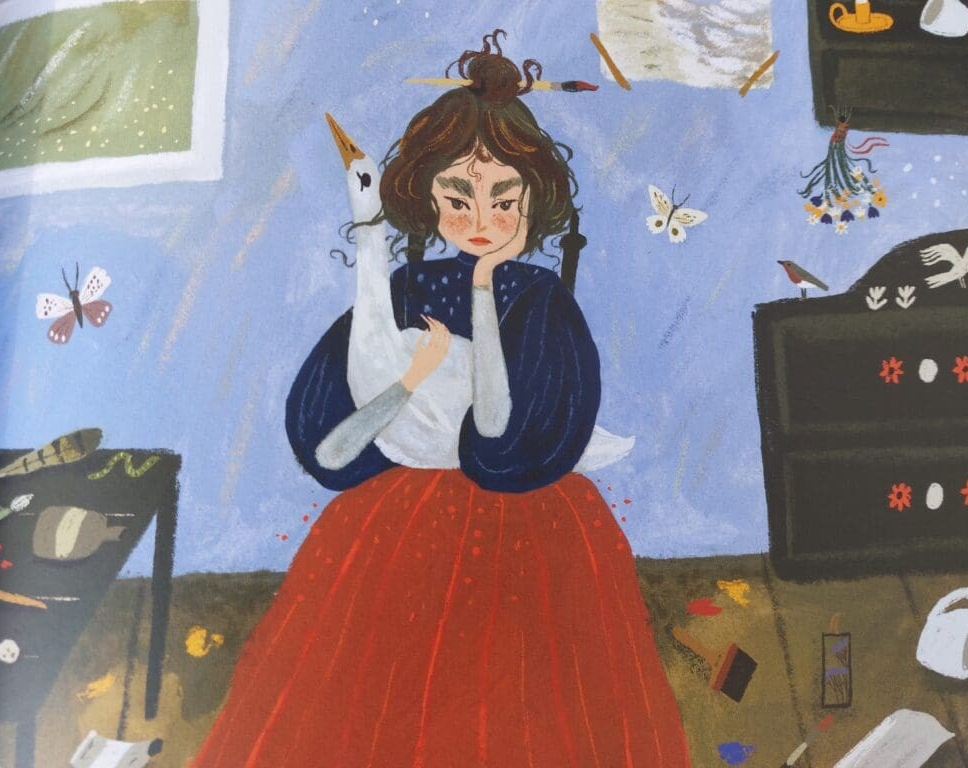
With all these details: How do you make alterations?
I do the illustrations with gouache on paper. But to change or add elements I work digitally.
The story of young Paula Modersohn-Becker on Amrum is about self-portraits. Have you ever been drawing yourself – like she does so often?
I often get told that I paint characters that resemble me – so in a way yes. But I do not draw myself intentionally, like Paula, who looks at herself and decides to paint a self-portrait. What I do – and I think Paula does it as well – is to look for something in myself, a deeper connection. The girls I paint are like me, not in the way they look, but in the way they feel.
The characters in the book are diverse: Some are black, there is a boy in a wheelchair. Why did you choose to portray a diverse society?
Marije and I talked about this. We think it’s really important for children to have books with diverse role figures, where everybody has a place. I understand that the use of diverse figures in historical books that must follow the facts is difficult. But this is an imaginary story, so we had this opportunity – and used it.
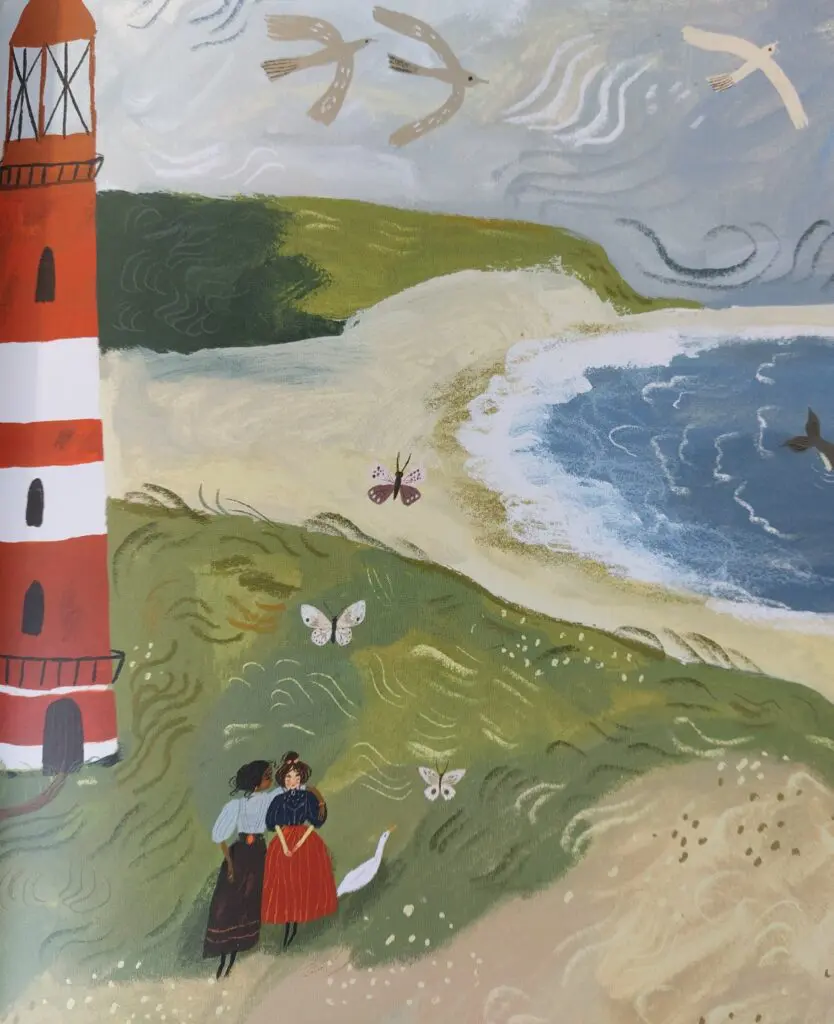
What inspires you about Paula Modersohn-Becker?
The main reason I love Paula is because of her connection to nature. She swam naked in lakes and rivers, even danced naked in the moonlight. A wild creature. I also love the way she used earthy colours in her paintings, like a musty rusted red. I tried to include those in the book as well, but of course the colours had to be a little bit brighter because it’s a children’s book.
